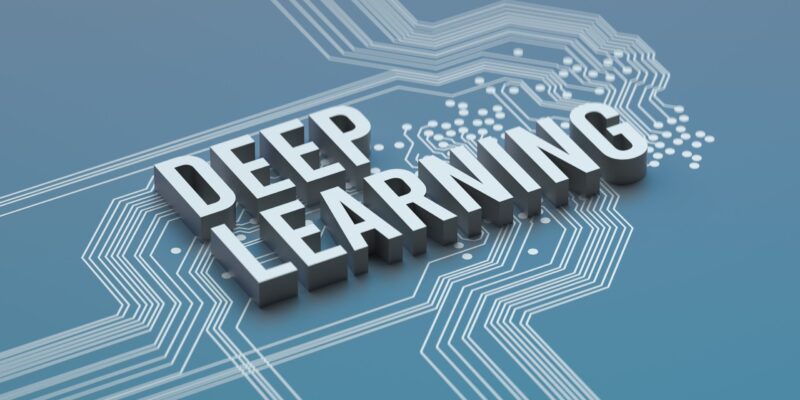
Selecting the right framework for your task is vital as each framework carries its distinct functions. Keras, revered for its high-level API, is a framework that acts as an interface for TensorFlow. In return, it supplies more scalability and empowers a model ready for production.
Similarly, other deep learning frameworks such as PyTorch are known for their dynamic computation abilities, which appeal to significantly more researchers. Having a skilled approach to all these frameworks is vital for an AI career and can be achieved via AI certification and courses. In its entirety, the artificial intelligence software market size is worth $126 billion per a report by Statista. With these frameworks, the overall market size continues to grow with each year. Keep reading to learn how these AI skills can offer an advantage to your career.
How to Choose the Right Framework
Should you feel that you lack appropriate AI skills for the same, go for AI certification programs that offer experience with AI skills. Here are the criteria that you must consider before choosing the right framework for your task –
- Scope of project – Pin-point the requirements of your project —scale, deployment needs, and complexity levels.
- Preferred ecosystem – Search for tools, libraries, and pre-trained models, if available, to know what you’re going to be dealing with in the future.
- Learning curve – Know your comfort with the chosen syntax and documentation.
- Performance – Compare performance metrics required by your training and inference.
- Compatibility – Check if the deep learning frameworks are compatible with hardware accelerators GPUs and TPUs. Also, check for integration features.
- Long-term support – Work with a framework in understanding its limits, and how far it can support the current development of your project.
Understanding Keras, TensorFlow, and PyTorch
Keras, TensorFlow, and PyTorch are all pillars of deep learning frameworks. With each of the frameworks offering an advantage with their characteristics, they are sure to help one’s AI skills. Let’s read about these in detail. To gain a deeper understanding of deep learning frameworks, opt for AI certification programs like the Certified Artificial Intelligence Consultant (CAIC™) which is a popular certification in the AI domain.
1. Keras
Keras, a high-level API for neural networks, serves as a user-friendly entry point into deep learning. With its intuitive design, it simplifies the build and experimentation with neural networks.
Top Features
- Keras is known for its high-level API and ease of use.
- It is integrated with TensorFlow 2.0, an entry point into deep learning.
Pros – High-level API, abstraction, and community support
Cons – Abstraction trade-off, performance overhead, complexity handling
2. TensorFlow
TensorFlow is a multi-dimensional interface renowned for its scalable and extensive ecosystem. It is deployed in terms of large-scale productions and is a first preference for most research experiments.
Top Features
- It is beginner-friendly and offers vast community support.
- Its intricate mechanism helps to tackle complex deep-learning datasets.
Pros – Robust deployment, wide community support
Cons – Learning curve, verbosity
3. PyTorch
PyTorch is a popular framework that is a favored framework for most researchers thanks to its researchers. Due to its conductive nature, it empowers a cut-throat neural network and is ideal for those opting for AI skills.
Top Features
- PyTorch has a rich ecosystem of libraries and tools that researchers and professionals can utilize to enhance their AI skills.
- It has an easy debugging feature that identifies and rectifies errors.
Pros – Python-based design, easy debugging
Cons – Smaller community compared to TensorFlow and pre-trained models
Key Differences Between Top Deep Learning Frameworks
| Parameters | Keras | TensorFlow | PyTorch |
| Ease-of-use | Beginner-friendly API | Moderate-hard learning curve | Python-based design |
| Abstraction | High-level abstraction | Both low-level and high-level APIs | Dynamic computation graph |
| Integration | TensorFlow 2.0 | Standalone framework | Standalone framework |
| Customization | Limited for complex models | Control and flexibility | Dynamic network construction |
| Performance | Performance overhead in terms of abstraction | Efficient for deployment | Efficient for research |
| Community | Part of the TensorFlow community | Extensive community support | Growing research-based community |
| Industry use | Widely used | Widely used in industry applications | Increasing adoption in research |
| Debugging | Abstraction ease | Various debugging tools are available | Common in research environments |
| Ecosystem | Smaller ecosystem | Extensive ecosystem | Growing with more resources |
Thinking of getting your hands on the best AI certification programs to master these AI skills?
The Certified Artificial Intelligence Scientist (CAIS™) by USAII® is a 360-degree AI certification (for professionals) where you can explore the nuances of popular deep learning frameworks along with hands-on experience in industry-based projects.
A survey by Statista suggests that AI/deep learning certifications are opted for by 35.2% of applicants. Other popular AI certification programs include those of Stanford University, IBM, and Microsoft. With AI/ML vocations expected to increase by 20% by the end of 2024, now is a good time to opt for the best AI course.
Conclusion
Keras, TensorFlow, and PyTorch offer different advantages: Keras for ease of use, TensorFlow for scalability, and PyTorch for flexibility. Tailor your choice as per the requirements allowed by these AI tools. With an AI certification, one can expect to be placed in the 97 million vocations projected to be created by AI (World Economic Forum). Enable innovation through an AI career with these ecosystems.









